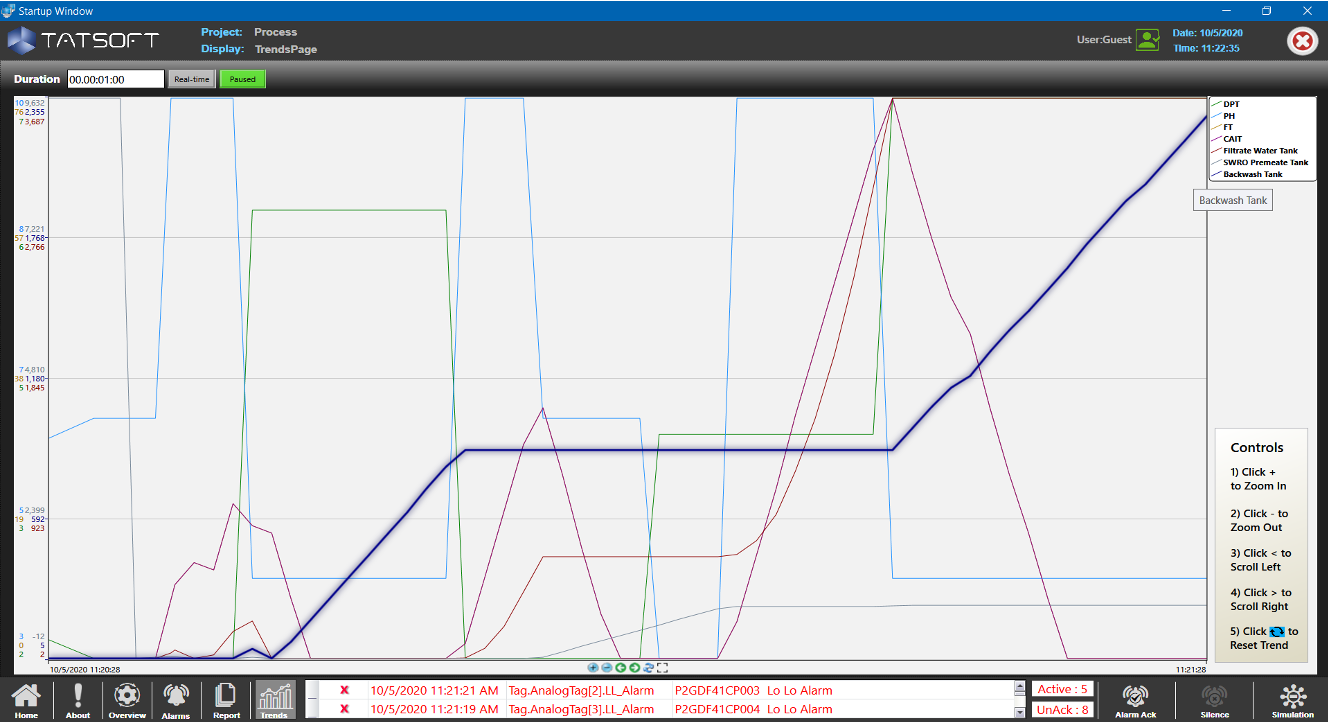Historian Module
stores and retrieves tag values with timestamps in SQL
or
time-series databases, enabling
Historian Module links: How-to Guide, Reference
:
- Trend Analysis - Visualize patterns and anomalies over time
- Performance Optimization - Compare current vs historical operation
- Regulatory Compliance - Maintain required data retention
- Root Cause Analysis - Investigate past events and issues
- Reporting - Generate production and quality reports
On this page
:
Table of Contents maxLevel 2 minLevel 2 indent 10px exclude Steps style none
Key Concepts
*- HistorianTag
- : Tag configured for historical data storage with specific collection rules
- HistorianTable
- : Group of tags with shared storage settings (sampling rate, retention, triggers)
- StorageLocation
- : Database destination for each historian table
- (SQL, external historians, custom)
- Trigger: Condition that determines when to store data (on change, periodic,
- event-based)
- Deadband: Filtering to prevent storage of insignificant changes
- Store and Forward: Buffering system ensuring no data loss during connection failures
What It Does
The Historian Module provides comprehensive data archiving:
What it Does- Stores time-series data from any tag in the system
- Connects to multiple databases simultaneously
- Provides data retrieval for trends, reports, and analytics
- Manages data retention and automatic purging
- Handles store-and-forward during database outages
- Supports both SQL and specialized historian databases
Configuration Workflow
Historian Module Configuration Workflow | ||
|---|---|---|
Step | Action | Description |
Select Database | Choose storage destination | Default SQLite or external database (PI, Canary, InfluxDB) |
Create HistorianTables | Define storage groups | Set sampling rates, triggers, and retention policies |
Add HistorianTags | Assign tags to tables | Map tags to appropriate storage groups |
Configure Triggers | Set storage conditions | On change, periodic, or condition-based storage |
Runtime Behavior
Data Collection
The module subscribes to all configured historian tags and evaluates trigger conditions. Data is stored to designated locations based on table settings, with automatic buffering if databases are temporarily unavailable.
Data Retrieval
Scripts, displays, and reports request historical data through the Historian module's query interface. The TrendChart component provides built-in visualization of time-series data.
Feature Highlights
- Native
- Integration - Canary, OSIsoft PI, InfluxDB, and other major historians
- Store
- and Forward -
- No data loss during network interruptions
- Timezone Handling - Automatic timezone and daylight saving time
- management
- Built-in
- SQL Engine - Embedded historian for SQL databases
- Web Monitoring - Browser-based historian status and trending
- Flexible Schemas - Standard or normalized table structures
- Compression Options - Deadbands and deviation filtering
In this section...
| Page Tree | ||||
|---|---|---|---|---|
|

